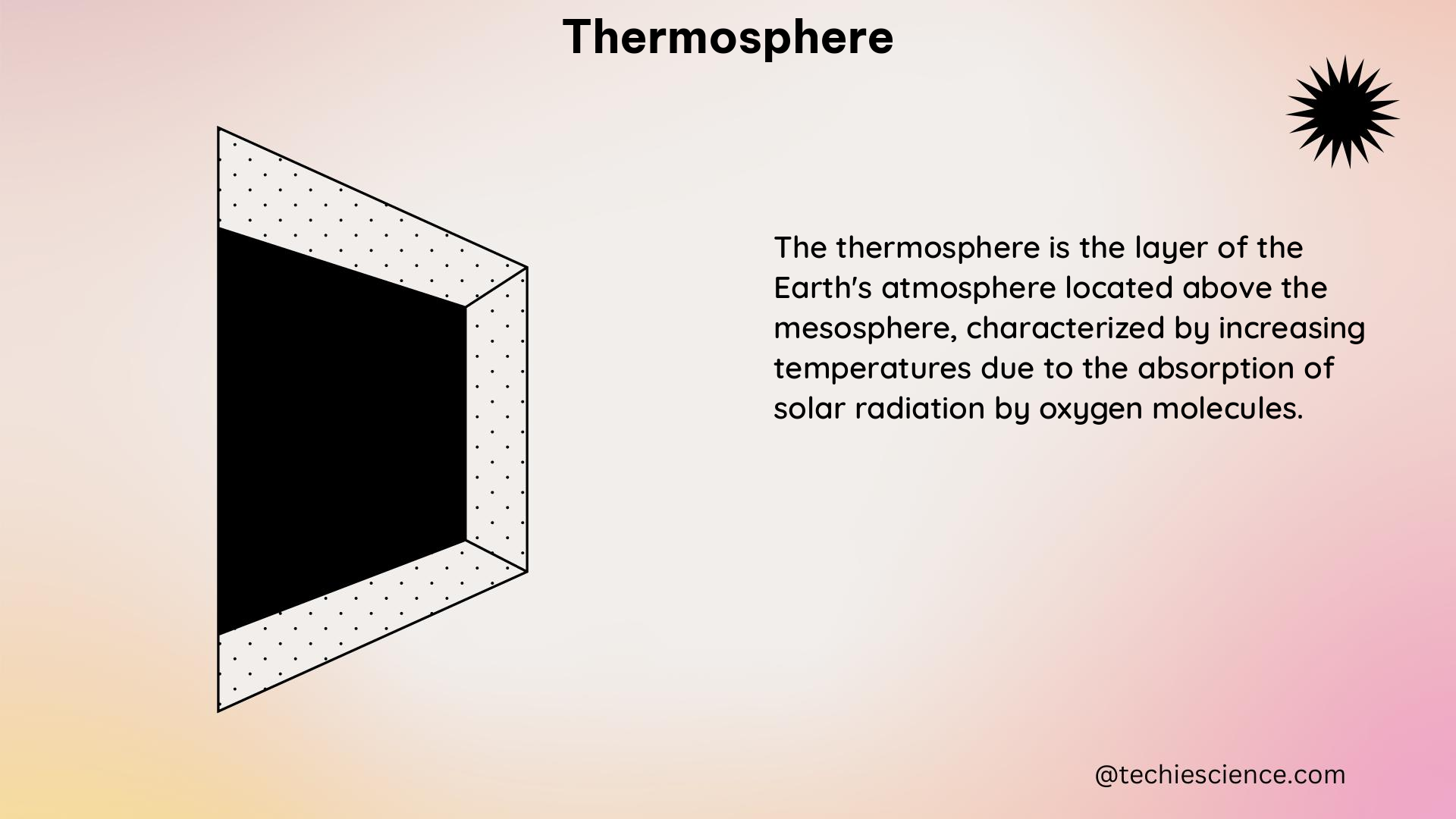The thermosphere is the outermost layer of the Earth’s atmosphere, extending from approximately 80 to 640 kilometers above the surface. This layer is characterized by a significant increase in temperature with altitude, reaching up to 1500 degrees Celsius or more at its upper boundary. The temperature in the thermosphere can vary significantly due to solar activity, geomagnetic activity, and other factors, making it a complex and dynamic region of the atmosphere.
Quantifying the Thermosphere
One of the primary ways to understand the thermosphere is through the measurement and analysis of its temperature and density. These quantifiable data points are crucial for various applications, such as space weather forecasting and satellite operations.
Temperature Measurements
The Thermosphere Ionosphere Mesosphere Energetics and Dynamics (TIMED) satellite’s Sounding of the Atmosphere using Broadband Emission Radiometry (SABER) instrument is a key tool for measuring temperature profiles in the thermosphere. The SABER instrument uses broadband infrared emission measurements to derive the temperature structure of the upper atmosphere, providing valuable insights into the thermal characteristics of the thermosphere.
The temperature in the thermosphere can be further quantified through the use of rocket-based measurements. These in-situ observations allow for the direct measurement of temperature at specific altitudes, providing a more detailed understanding of the vertical temperature profile within the thermosphere.
Density Measurements
The density of the thermosphere can be inferred from satellite drag data, which is obtained from missions such as the Challenging Minisatellite Payload (CHAMP), Gravity Recovery and Climate Experiment (GRACE), and Gravity Field and Steady-State Ocean Circulation Explorer (GOCE). These satellites experience atmospheric drag as they orbit the Earth, and by analyzing the changes in their orbital parameters, researchers can estimate the density of the thermosphere.
The total mass densities derived from these satellite drag data can be used for comparative analyses and to study the fluctuations in thermospheric density. For example, the TIMED-SABER instrument has provided temperature data that can be used in conjunction with the satellite drag data to gain a more comprehensive understanding of the thermosphere’s composition and dynamics.
Modeling and Databases
In addition to direct measurements, there are also models and databases that provide quantitative data on the thermosphere. One such model is the Drag Temperature Model (DTM), which offers low spatial and temporal resolution average predictions of the main constituents’ temperature, total, and partial densities as a function of location, solar and geomagnetic activity, and season.
The DTM2020 models, developed in the framework of the Space Weather Atmosphere Models and Indices (SWAMI) project, are driven by solar and geomagnetic activity indices, providing a more comprehensive representation of the thermosphere’s behavior.
Limitations and Uncertainties

While the various sources of quantifiable data on the thermosphere offer valuable insights, it is important to consider the limitations and uncertainties associated with each approach. For example, satellite drag data can be affected by errors in the satellite’s orbit determination and the atmospheric models used to calculate the density. Similarly, different models and databases may have different assumptions and simplifications, leading to variations in the predicted values.
To obtain a comprehensive understanding of the thermosphere, it is crucial to consider multiple sources of data and models, as well as their respective strengths and weaknesses. This approach can help researchers and scientists to better understand the complex and dynamic nature of the thermosphere and its interactions with other atmospheric layers.
DIY Thermosphere Measurements
For those interested in a more hands-on approach to understanding the thermosphere, there are educational kits and resources available that can help individuals conduct simple experiments and measurements. The National Space Society, for example, offers a Thermosphere Education Kit that includes a temperature probe, data logger, and curriculum materials to help students learn about the thermosphere and measure temperature profiles.
These DIY experiments can provide valuable insights into the thermosphere and can be a great way for students and enthusiasts to engage with this fascinating layer of the Earth’s atmosphere.
Conclusion
The thermosphere is a complex and dynamic region of the Earth’s atmosphere, and understanding its behavior is crucial for a wide range of applications. By leveraging a variety of measurement techniques, models, and databases, researchers and scientists can quantify the temperature and density of the thermosphere, providing valuable insights into its structure and evolution.
Whether you’re a student, a researcher, or simply someone interested in the Earth’s atmosphere, exploring the thermosphere can be a rewarding and enlightening experience. With the resources and tools available, you can dive deeper into this fascinating layer of the atmosphere and contribute to our understanding of this dynamic and ever-changing region.
References:
– New Approaches for Quantifying and Understanding Thermosphere … https://www.proquest.com/openview/4d35509f4d128fcef4be6f7347f3b553/1?cbl=18750&diss=y&pq-origsite=gscholar
– Data‐Driven Inference of Thermosphere Composition During Solar … https://agupubs.onlinelibrary.wiley.com/doi/full/10.1029/2019SW002264
– Thermosphere – an overview | ScienceDirect Topics https://www.sciencedirect.com/topics/agricultural-and-biological-sciences/thermosphere
– Description and comparison of 21st century thermosphere data https://www.sciencedirect.com/science/article/pii/S027311772200895X
– The operational and research DTM-2020 thermosphere models https://www.swsc-journal.org/articles/swsc/full_html/2021/01/swsc210039/swsc210039.html
– Thermosphere Education Kit | National Space Society https://www.nss.org/education/thermosphere-education-kit/

The lambdageeks.com Core SME Team is a group of experienced subject matter experts from diverse scientific and technical fields including Physics, Chemistry, Technology,Electronics & Electrical Engineering, Automotive, Mechanical Engineering. Our team collaborates to create high-quality, well-researched articles on a wide range of science and technology topics for the lambdageeks.com website.
All Our Senior SME are having more than 7 Years of experience in the respective fields . They are either Working Industry Professionals or assocaited With different Universities. Refer Our Authors Page to get to know About our Core SMEs.